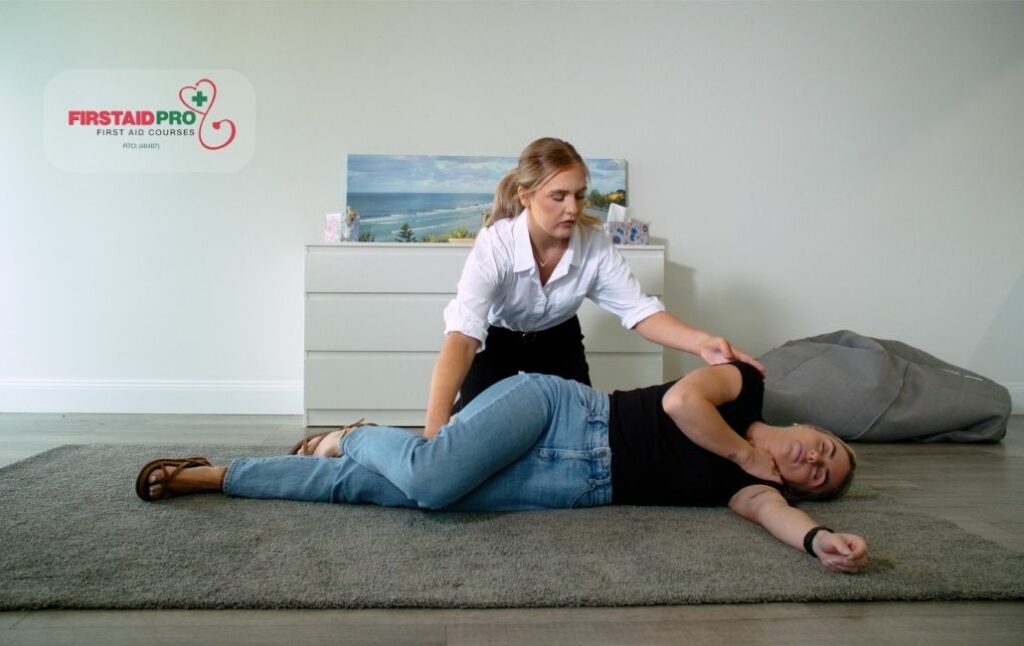Introduction
In any kind of emergency circumstance, the ability to examine a casualty's responsiveness can indicate the difference between life and death. Recognizing how to execute this important analysis is crucial for any individual associated with Basic Life Support (BLS) training. This write-up explores The Value of Inspecting Responsiveness: A BLS Essential, discovering its importance within the wider context of fundamental vs sophisticated life assistance techniques, hospital codes and protocols, and much more.
Table of Contents
Understanding Responsiveness in BLS- What is Responsiveness? Why is it Essential in Emergencies?
- Overview of Basic Life Support Transitioning to Advanced Life Support
- Step-by-Step Guide Common Mistakes to Avoid
- Signs of No Breathing What to Do Next
- Understanding AEDs When to Utilize an AED
- Benefits of BLS Training How to Obtain Certified
- The Relevance of Teamwork Recommended Compression Rates
- Techniques for Staying Calm The Duty of Calmness in Effective Response
Understanding Responsiveness in BLS
What is Responsiveness?
Responsiveness describes an individual's ability to respond to stimulations, such as spoken commands or physical touch. In a medical emergency, evaluating responsiveness helps establish the seriousness and sort of care required.
Why is it Important in Emergencies?
Checking responsiveness enables responders to rapidly examine a victim's condition, leading succeeding actions such as calling for help or doing mouth-to-mouth resuscitation. Fundamentally, it sets the stage for all more interventions.
Basic vs Advanced Life Support
Overview of Basic Life Support
Basic Life Support (BLS) incorporates important methods targeted at maintaining life until innovative medical help shows up. It consists of examining responsiveness, carrying out CPR, and utilizing an Automated External Defibrillator (AED).
Transitioning to Advanced Life Support
Advanced Life Support (ALS) involves a lot more innovative clinical interventions that trained professionals perform, such as providing medications and progressed airway administration techniques.
How to Check Responsiveness
Step-by-Step Guide
Approach the specific calmly. Gently touch their shoulder and talk loudly however clearly. Observe their reaction; if there's no reaction, proceed with more assessments.Common Blunders to Avoid
- Failing to inspect breathing after evaluating responsiveness. Not asking for emergency situation services without delay if there is no response.
Identifying No Breathing
Signs of No Breathing
In some situations, a person might be less competent yet still breathing improperly or otherwise whatsoever. Try to find:
- Absence of breast movement. No distinct breaths.
What to Do Next
If you recognize no breathing:
Call emergency services immediately. Begin CPR without delay.Public Defibrillator Usage
Understanding AEDs
An Automated External Defibrillator (AED) is a portable device made to examine heart rhythms and supply an electric shock when necessary.
When to Utilize an AED
Use an AED when:

- The person is less competent and not breathing. Medical professionals get on their way but immediate action is required.
BLS Qualification Importance
Benefits of BLS Training
Obtaining BLS accreditation outfits people with important abilities needed during emergency situations, improving their confidence in reacting effectively.
How to Get Certified
Certification training courses are readily available via various organizations such as the American Heart Organization (AHA) or Red Cross-- select one that fits your schedule!
Taking Switches on Compressions
The Value of Teamwork
When CPR Training Wollongong several responders are present, taking turns on compressions helps prevent fatigue and makes sure high-grade chest compressions throughout the resuscitation process.
Recommended Compression Rates
The perfect compression rate during mouth-to-mouth resuscitation is 100-120 compressions per minute; ensuring this uniformity can significantly enhance survival chances.
Maintaining Calmness During Emergencies
Techniques for Staying Calm
Staying tranquility during a crisis is vital-- not simply for your very own efficiency yet likewise for those around you who may be looking for leadership during chaos.
Take deep breaths prior to approaching the situation. Focus on tasks rather than emotions; this will aid you remain centered.The Function of Calmness in Reliable Response
Your behavior can significantly influence just how others react-- maintaining calmness urges team effort and infuses confidence among spectators helping with care.
Conclusion
In recap, understanding exactly how and why we check responsiveness forms the backbone of effective BLS training and interventions during emergency situations. Whether you're navigating standard vs advanced life support situations or making use of public defibrillators efficiently, every second counts when lives are at stake-- making knowledge concerning these processes invaluable.
FAQs
Q1: What should I do if someone is unresponsive?

Q2: How does monitoring responsiveness vary from various other assessments?
A2: Checking responsiveness especially assesses a person's awareness degree while various other evaluations may entail checking crucial indications or breathing patterns.
Q3: Is BLS qualification needed for everyone?
A3: While not mandatory for everybody, getting BLS certification can encourage you with essential skills that could conserve lives in emergencies.
Q4: Can I use an AED on a person who shows signs of breathing?
A4: No, just use an AED if the individual is unresponsive and not breathing usually; make sure proper evaluation first!
Q5: Just how commonly should I exercise my CPR skills?
A5: It's suggested to rejuvenate your mouth-to-mouth resuscitation abilities with routine training sessions at the very least every 2 years or earlier if you feel uncertain regarding your abilities.
Q6: Does maintaining composure really impact emergency situation outcomes?
A6: Absolutely! Composed -responders tend to act CPR Course Wollongong more successfully which positively influences both group dynamics and client outcomes.
By focusing on the value of checking responsiveness within Basic Life Support training structures, we accept our duty as potential lifesavers-- furnishing ourselves with expertise that can change minutes of dilemma into opportunities for hope and recovery!